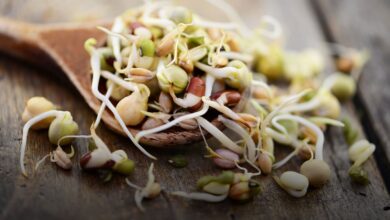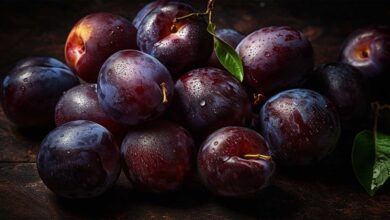Its properties have been proven by science

Black elderberry or Elderberry nigra L. is a shrub in the Caprifoliaceae family. Originally from Central Europe, the elderberry plant is widely spread in France and in all regions of Europe with a temperate climate. The elderberries bloom from early May until August, then between August and September they bear clusters of small, fleshy berries of an intense purple-black colour.
Elderberry flowers and berries are full of vitamins, minerals and antioxidants. It is frequently used to treat various influenza symptoms and respiratory infections, and today these therapeutic properties are beginning to be well demonstrated scientifically through numerous in vivo studies on cell cultures and clinical studies.
Briefly
- Elderberry flowers and berries are rich in vitamins, minerals and antioxidants.
- It is used in traditional medicine to treat a variety of symptoms and diseases, including respiratory infections;
- Polyphenols are the main bioactive compounds, responsible for the high antioxidant activity of elderberry;
- Elderberry and raspberry flowers have diaphoretic, antipyretic and diuretic properties. Berries also act as a natural laxative and detoxifier.
- Black elderberry is used in various nutritional supplements, in the form of syrup, drops, tablets, etc.
Buy elderberry at the best prices
Amazon Affiliate Link. Prices mentioned in this article are indicative and subject to change.
Traditional uses
The flowers and berries of black elderberry are traditionally used in folk medicine as a treatment for a range of ailments. They are mainly used to treat common symptoms and diseases such as colds, flu, fever, cough, nasal congestion or runny nose. It is also used preventively to strengthen the immune system.
Active ingredients of elderberry plant
If elderberry is rich in nutrients, such as carbohydrates, complete proteins, fats, organic acids, minerals, vitamins and essential oils; Polyphenols, which are biochemical compounds known for their strong antioxidant activity, are the main bioactive compounds found in elderberries and their concentration is very high.
This high antioxidant activity of elderberry fruits and flowers is linked to their medicinal properties. In fact, these polyphenols are able to eliminate free radicals and thus resist oxidative stress that causes deterioration of cellular components and contributes to the development of a certain number of diseases.(1).
Characteristics of elderflowers
Due to the presence of polyphenols, elder flowers mainly exhibit diaphoretic (increased sweating), antipyretic (reduced fever) and diuretic properties.
These flowers are often used in infusions for internal or external application. Elderberry flowers have anti-inflammatory and antibacterial properties, and are generally used as gargles to treat sore throats or compresses to treat conjunctivitis.
Properties of berries
The black Sambucus fruit, like the flowers, has diaphoretic, antipyretic and diuretic properties, but in addition it acts as a natural laxative and detoxifier.
For these additional properties, elderberry is often an essential ingredient in herbal mixtures used as a treatment for constipation or to aid in weight loss.
In addition, the berries exhibit a mild analgesic effect and can be used as a natural reliever for migraines, sciatica, or neuralgia.(2).
Presentations and studies
Scientific research on elderberry has made it possible to ingest it for its traditionally recognized healing properties.
Today many remedies for colds, flu and other infectious diseases are developed from the fruits or flowers of Sambucus nigra. They are used as ingredients for nutritional supplements and are found in multiple forms such as syrup, drops, tablets, capsules, lozenges, emulsions, suspensions or aerosols.
The antibacterial and antiviral activities of elderberry have been clearly demonstrated through numerous laboratory studies on cell cultures and also through some clinical studies. Here we present some of these results.
Antibacterial properties
The antibacterial activity of elderberry flower, mulberry, and leaf extracts was studied in vitro against 13 methicillin-resistant pathogens.
Elderflower and mulberry extracts showed inhibitory activity against the development of most of the bacteria analyzed, both against Gram-positive bacteria, such as Staphylococcus sp. Or Bacillus cereus, and against gram-negative bacteria, such as Salmonella poona or Pseudomonas aeruginosa.
Elderflower extracts showed higher antimicrobial efficacy and larger zones of inhibition against a wider range of bacteria, especially against MRSA (17 mM) or Pseudomonas aeruginosa (9 mM), compared to the other extracts.
Sambucus nigra fruit has been shown to possess antimicrobial activity against human pathogenic bacteria that cause upper respiratory tract infections.
Adding a standardized liquid extract of elderberry, Rubini®, at a concentration of 10%, to bacterial liquid cultures reduced the growth of the Gram-positive bacteria Streptococcus pyogenes and Streptococcus Groups C and G, as well as the Gram-negative bacteria Branhamella catarrhalis. 70% compared to control samples.
A 20% concentration of elderberry extract inhibits bacterial growth by 99%.(3).
Antiviral properties
The antiviral activity of standardized elderberry extract (Rubini®) was studied in vitro against two strains of human pathogenic viruses: influenza A (KAN-1,H5N1) and B (B/Mass).
In this study, treatment with elderberry extract significantly reduced the prevalence and magnitude of influenza B viral focus, while reducing the number of KAN-1 outbreaks compared to untreated controls.(4).
It was found that elderberry extract at a concentration of 252 µg/ml caused the inhibition of human influenza A (H1N1) virus by 50%, while a concentration of 1000 µg/ml led to 100% inhibition of this viral infection.
In addition, polyphenolic compounds found in elderberry fruit extract have been shown to bind to H1N1 viruses, hindering their ability to infect host cells.
These results showed that inhibition of H1N1 virus induced by elderberry polyphenols was similar to known anti-influenza drugs, such as oseltamivir (Tamiflu®) and amantadine.(5).
In another in vitro study, it was observed that concentrated elderberry juice could affect the H1N1 virus in the early stages of virus replication. 50% inhibition was achieved with an extract concentration of 720 g/mL when samples were administered during already established infections, and with a lower extract concentration of 3600 μg/mL, when elderberry extract was applied immediately after infection.
In vivo experiments and clinical trials
Elderberry extracts have been shown to have an in vivo inhibitory effect on infectious bronchitis virus (IBV), a pathogenic coronavirus of chickens, at an early stage of viral infection. Elderberry extract reduced IBV viral loads by several orders of magnitude depending on the dose applied.
Increasing the concentration of elderberry extract resulted in a decrease in viral loads. In addition, electron microscopy of viruses treated with elderberry extract showed that viral envelopes were damaged by the plant.
Other data had previously shown that treatment with elderberry extract leads to widespread damage to the IBV membrane, making the virus likely non-infectious.(6).
Furthermore, in vivo experiments have shown that elderberry can reduce virus replication and can stimulate the immune response.(7).
In Norway, a country particularly open to natural remedies, randomized, double-blind, placebo-controlled clinical trials were conducted during the fall-winter season of 1999/2000. The research looked at infections with influenza A and B viruses.
The study included people with at least two influenza symptoms, including fever ≥38°C and one or more respiratory influenza symptoms. The study used a standardized extract of elderberry, Sambucol® syrup.
Participants were randomly divided into two groups, and received either 15 ml of elderberry syrup or a placebo four times daily for five days. Treatment effects were monitored with a visual analog scale. It turned out that in the group treated with elderberry syrup, symptoms decreased on average four days earlier than in the group that took the placebo.(8).
In 2009, during the spring flu season, another randomized, double-blind study was conducted(9) A placebo-controlled clinical trial was conducted with participants who had at least three flu-like symptoms in the past 24 hours, such as fever, cough, headache, muscle pain, runny nose or nasal congestion. Patients were randomly divided into two groups. The first group received 4 slowly dissolving tablets of elderberry extract daily (each tablet contains 175 mg exclusively of elderberry extract) and the second group received a placebo.
After 48 hours of treatment, patients in the group treated with elderberry extract showed a significant reduction in most flu symptoms: 28% of patients no longer had any symptoms and 60% of patients experienced visible relief from their symptoms, while the placebo group did not. Are you experiencing any symptoms? There was no improvement or even the symptoms worsened.
What to remember
Available scientific studies support traditional knowledge regarding the benefits of elderberry. The richness of elderberry flowers and berries in polyphenols gives elderberry a very high antioxidant activity, giving it its beneficial properties for our health.
It has been scientifically proven that elderberry has pronounced antibacterial and antiviral properties. Therefore, elderberry consumption fits perfectly into a natural, organic, healthy diet and is beneficial for our health.
(Tags for translation) Traditional uses
Its properties have been proven by science


